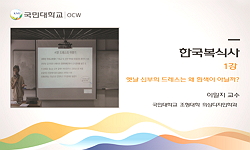Fibers are recently being considered as a new agent for improving the performance of existing building materials. However, until now, only simple methods have been applied for fiber use, such as scattering a small fiber amount inside the material or u...
http://chineseinput.net/에서 pinyin(병음)방식으로 중국어를 변환할 수 있습니다.
변환된 중국어를 복사하여 사용하시면 됩니다.
- 中文 을 입력하시려면 zhongwen을 입력하시고 space를누르시면됩니다.
- 北京 을 입력하시려면 beijing을 입력하시고 space를 누르시면 됩니다.

유리섬유 메시의 인장력에 따른 텍스타일 보강 패널의 휨강도 특성 = Study on Flexural Strength of Textile-Reinforced Mortar Panel with Tensile Force of Glass Fiber Mesh
한글로보기https://www.riss.kr/link?id=A106145506
-
저자
김상헌 (한국건설기술연구원) ; 이세현 (한국건설기술연구원) ; Kim, Sang Heon ; Lee, Sea Hyun
- 발행기관
- 학술지명
- 권호사항
-
발행연도
2018
-
작성언어
Korean
- 주제어
-
등재정보
KCI우수등재
-
자료형태
학술저널
- 발행기관 URL
-
수록면
373-380(8쪽)
-
KCI 피인용횟수
0
- DOI식별코드
- 제공처
- 소장기관
-
0
상세조회 -
0
다운로드
부가정보
다국어 초록 (Multilingual Abstract)
Fibers are recently being considered as a new agent for improving the performance of existing building materials. However, until now, only simple methods have been applied for fiber use, such as scattering a small fiber amount inside the material or using fibers as a sheet covering for the material. Application of woven or textile fibers inside the material is believed to result in higher performance of a building material. However, because basic research on composite material performance is still underway and the theoretical manufacturing skills and techniques for fiber application have not been implemented, fibers have not yet been practically used in building materials. The purpose of this study is to evaluate the properties of the flexural strength of composite materials using textile fibers to obtain fundamental data for the production of high-performance building materials. The flexural strength of the textile-reinforced specimens increases by 55% as compared with that of the reference specimens, and it increases proportionally with an increase in the maximum tensile load of the textile. The flexural strength of the panel is estimated to increase on the basis of the tensile load of the textile. However, an increase in the thickness of the specimen containing the textile decreases the rate of increase in flexural strength.
참고문헌 (Reference)
1 전상희, "현무암 단섬유 강화 시멘트 복합재료의 특성" 한국섬유공학회 46 (46): 261-268, 2009
2 이정윤, "연속섬유에 의하여 보강된 철근콘크리트 보의 전단강도 평가" 한국콘크리트학회 17 (17): 983-992, 2005
3 최성민, "보강섬유 직조형태에 따른 PVC 방수시트의 물성에 관한 실험 연구" 대한건축학회 29 (29): 91-98, 2013
4 D. H. Ryu, "Technology and Application of Inorganic Fiber Industry" 7 : 162-189, 2003
5 J. S. Won, "State of the Art of Composite Materials under Extreme Condition" 17 : 12-39, 2014
6 J. Hegger, "Spatial Textile Reinforcement Structures for Ventilated and Sandwich Façade Elements" 15 : 665-675, 2012
7 W. Brameshuber, "Report 36 : Textile Reinforced Concretestate-of-the-art Report of RILEM TC 201-TRC" RILEM Publications 2006
8 이준석, "PVA 섬유와 탄소섬유의 첨가가 섬유강화 시멘트의 물성에 미치는 영향" 한국섬유공학회 44 (44): 22-27, 2007
9 A. Peled, "Mechanical Properties of Hybrid Fabrics in Pultruded Cement Composites" 31 : 647-657, 2009
10 F. G. Carozzi, "Mechanical Properties and Debonding Strength of Fabric Reinforced Cementitious Matrix (FRCM) Systems for Masonry Strengthening" 70 : 215-230, 2015
1 전상희, "현무암 단섬유 강화 시멘트 복합재료의 특성" 한국섬유공학회 46 (46): 261-268, 2009
2 이정윤, "연속섬유에 의하여 보강된 철근콘크리트 보의 전단강도 평가" 한국콘크리트학회 17 (17): 983-992, 2005
3 최성민, "보강섬유 직조형태에 따른 PVC 방수시트의 물성에 관한 실험 연구" 대한건축학회 29 (29): 91-98, 2013
4 D. H. Ryu, "Technology and Application of Inorganic Fiber Industry" 7 : 162-189, 2003
5 J. S. Won, "State of the Art of Composite Materials under Extreme Condition" 17 : 12-39, 2014
6 J. Hegger, "Spatial Textile Reinforcement Structures for Ventilated and Sandwich Façade Elements" 15 : 665-675, 2012
7 W. Brameshuber, "Report 36 : Textile Reinforced Concretestate-of-the-art Report of RILEM TC 201-TRC" RILEM Publications 2006
8 이준석, "PVA 섬유와 탄소섬유의 첨가가 섬유강화 시멘트의 물성에 미치는 영향" 한국섬유공학회 44 (44): 22-27, 2007
9 A. Peled, "Mechanical Properties of Hybrid Fabrics in Pultruded Cement Composites" 31 : 647-657, 2009
10 F. G. Carozzi, "Mechanical Properties and Debonding Strength of Fabric Reinforced Cementitious Matrix (FRCM) Systems for Masonry Strengthening" 70 : 215-230, 2015
11 A. J. Majumdar, "Glass Fibre Reinforced Cement" 15 : 107-127, 1974
12 A. Bentur, "Fibre Reinforced Cementitious Composites" CRC Press 2014
13 W. Brameshuber, "Extrusion of Textile Reinforced Concrete" 11 : 427-434, 2015
14 D. J. Hannant, "Advanced Concrete Technology" Butterworth-Heinemann 6/1-6/17, 2003
15 H. B. Ko, "A Study on Mechanical Characteristics of Plate Member Using Continuous Fiber Mesh" 16 : 35-42, 2000
동일학술지(권/호) 다른 논문
-
습윤처리 및 열압착처리가 기계적으로 제작된 천연 실크 부직포의 구조 및 성질에 주는 영향
- 한국섬유공학회
- 배연수
- 2018
- KCI우수등재
-
전도성 방적사 및 필라멘트사를 이용한 섬유형 전극 정전용량형 터치 센서의 성능 비교 연구
- 한국섬유공학회
- 최세진
- 2018
- KCI우수등재
-
아토피성 피부질환 완화용 세라마이드 함유 3차원 섬유 구조체 디자인 및 평가
- 한국섬유공학회
- 양광웅
- 2018
- KCI우수등재
-
그래핀 산화물/알지네이트 기반 그라파이트 섬유의 제조 및 특성
- 한국섬유공학회
- 임나영
- 2018
- KCI우수등재
분석정보
인용정보 인용지수 설명보기
학술지 이력
| 연월일 | 이력구분 | 이력상세 | 등재구분 |
|---|---|---|---|
| 2022 | 평가예정 | 계속평가 신청대상 (등재유지) | |
| 2017-01-01 | 평가 | 우수등재학술지 선정 (계속평가) | |
| 2013-01-01 | 평가 | 등재 1차 FAIL (등재유지) |  |
| 2010-01-01 | 평가 | 등재학술지 유지 (등재유지) |  |
| 2008-09-03 | 학술지명변경 | 외국어명 : The Korean Fiber Soceity -> Textile Science and Engineering |  |
| 2008-01-01 | 평가 | 등재학술지 유지 (등재유지) |  |
| 2006-01-01 | 평가 | 등재학술지 유지 (등재유지) |  |
| 2005-03-05 | 학술지명변경 | 외국어명 : The Korean Fiber Soceity -> Textile Science and Engineering |  |
| 2003-01-01 | 평가 | 등재학술지 선정 (등재후보2차) |  |
| 2002-01-01 | 평가 | 등재후보 1차 PASS (등재후보1차) |  |
| 1998-07-01 | 평가 | 등재후보학술지 선정 (신규평가) |  |
학술지 인용정보
| 기준연도 | WOS-KCI 통합IF(2년) | KCIF(2년) | KCIF(3년) |
|---|---|---|---|
| 2016 | 0.13 | 0.13 | 0.15 |
| KCIF(4년) | KCIF(5년) | 중심성지수(3년) | 즉시성지수 |
| 0.17 | 0.17 | 0.29 | 0.02 |




 ScienceON
ScienceON







